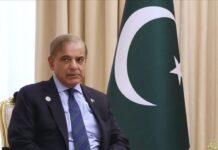ISLAMABAD: An inquiry report into the country-wide power breakdown on January 23 has been prepared and has recommended a departmental inquiry before action against key officials of power management bodies, Profit has learnt.
The report prepared by a committee constituted under the convenorship of Petroleum Minister Musadik Malik has been sent to the federal cabinet where it will be discussed in an upcoming meeting, likely to be held next week.
The report, a copy of which is available with Profit, has detailed the reasons behind the breakdown and held officials of the National Transmission and Dispatch Company (NTDC), National Electric Power Regulatory Association (NEPRA), power control management and shift in-charge along with his team responsible for the major crisis.
It has recommended departmental inquiry prior to any action against them.
The report said there was no shortage of electricity when the fault erupted in Lahore on the HVDC (High Voltage Direct Current) system as 600 megawatts additional electricity was added into the system from Sindh.
It is also learnt from the report that the fault in the HVDC system Lahore had erupted a total of 300 times during the last two years but no one paid attention to this.
It also said three power units of the Water and Power Development Authority (WAPDA) were responsible for being unable to immediately restore the power system after the breakdown.
Poor coordination, absence of unity of command among NTDC, NEPRA and other concerned institutes, a shortage of experts, and poor technology have been declared as the main reasons behind the breakdown.
The system of generation and transmission is operated by the control room of the National Power Control Center (NPCC) at Islamabad, which is the nerve centre.
The report has a number of recommendations, including forming an implementation committee under the convenorship of the Minister for Energy (Power Division) to ensure proper preparedness for system blackouts and subsequent restoration. The said committee should ensure proper coordinated planning and execution of the recommendations.
Furthermore, the report recommended the regulator, NEPRA and the system operator need to work together to create protocols to handle situations like these when power generators not falling in the economic merit order need to be used for system security.
That coordination, the report said, is missing for which the government needs to issue policy instructions to NEPRA. As far as the system restoration is concerned, WAPDA needs to immediately improve the speed governing mechanism at Tarbela.
WAPDA, NTDC and IRSA must devise SOPs for low water season (December and January) to resolve water indent issues during the acute emergency situations, such as partial or total system blackout.
The stability of the recently activated HVDC system especially at Lahore HVDC Converter Station needs to be ensured to avoid the frequent commutation failures. An investigation into more than 300 commutation failures needs to be carried out by NTDC/NPCC on an urgent basis.
FURTHER REPORT DETAILS:
The report said that, owing to a shortfall on the night before the blackout, electricity was supplied from south to north. About 5,831 MW was being generated from power plants located in the south of the country while power plants in the north were generating 5,852 MW.
The sequence of events leading to the blackout started unfolding from 7:30am on the morning of January 23. At that time, the system was working normally.
The total demand of the country was 11,683 MW of which the power generators in the south were generating 5,831 MW and those in the north 5,852 MW.
The demand in the south was far less than the generation there. On the other hand, there was a deficit of 4,130 MW between generation and demand in the north, which was being met by supply from the southern generation through hybrid HVAC/HVDC transmission networks.
At 7:32am, the frequency reached 50.75 megahertz, and, as a result, 14 state- and privately-owned power plants suspended power generation operations at 7:34am.
To control the frequency spike, power production from Ghazi Barotha Power House was reduced from 580 MW to 250 MW. However, the system was badly affected due to the reduction in power supply in the north and resultantly all power plants of the region suspended operations.
The power flow on the AC Corridor (2x500kV circuits from Matiari to Dadu/Moro and 3x500kV from Guddu to north) was 1,730 MW, while 2,400 MW was flowing on the parallel Matiari-Lahore HVDC transmission line.
A 500kV circuit from Jamshoro to Dadu was already under fault due to a tower collapse (sabotage) for the past few days. Additionally, three 500kV circuits (Moro to Rahim Yar Khan, Guddi 747 to Muzaffargarh and Muzaffargarh to H.B.Shah) were on shutdowns for voltage control during low load demand. Guddu 747 plant was also non-operational.
No spinning reverse and no n-1 contingency provision was present on 500kV circuits from Matiari to Moro/Dadu and from Dadu up to Guddu.
The inquiry report, in its conclusion, said the blackout was due to the system operation including additional power from the south without considering the constrained transmission pathways and without switching on powered off 500kV lines.
Furthermore, the shift operator aggravated the situation by reducing power generation at Ghazi Barotha to create a balance, but that had the opposite effect and actually resulted in a loss of balance.
This was a mistake which was done at the system operator’s end and could have been avoided through pre-event planning.
However, the report added, if we look at all the factors leading to the incident, we need to consider delays in strengthening the AC system that is a requirement for the HVDC system to operate in a stable manner.
In its recommendations, the inquiry report said that WAPDA, in coordination with NTDC, must investigate the “black start” capabilities at Tarbela, Mangla and Warsak power plants, as these plants repeatedly failed to operate in island models and caused significant restoration delays.
“Black start” is the capability to restart parts in a power system to recover from a blackout without needing electricity. Tarbela, Mangla and Warsak are all hydroelectric generation plants.
Performance of governor control system at these plants, the report said, must be verified for “islanded” and synchronised operating modes. Appropriate corrective measures must be taken urgently.
After the experience, it is necessary that a proper restoration plan must be established and all the systems be pre-tested under blackout conditions annually.
The stability of the recently activated HVDC system, especially at the Lahore HVDC Converter Station, needs to be ensured to avoid the frequent commutation failures.
The terms of reference of the committee were to probe the reasons of the power breakdown, fix responsibility, and recommend remedial measures to prevent such occurrences in future.
Interestingly, the report noted that about 80% of the country’s total demand comes from the north – Punjab and Khyber Pakhtunkhwa – and 20% from Sindh and Balochistan.
The power is carried through the hybrid transmission system that comprises 3x500kV AC circuits originating from Jamshoro/Matiari in the south to the north interface, which become 4x500kV AC circuits from Guddu onwards. Also a 660kV HVDC transmission line from Matiari in Sindh to Lahore in Punjab transfers power from plants in the south to the load centres of the north.
The operation of such a power system becomes very challenging in the winter season when hydropower generation, which is mostly in the north, is at a minimum given that rivers in the north freeze and the water flow, and hence generation, is much lower.
Therefore, a significant amount of demand in the north has to be supplied from cheaper power generation sources located in the south that are not affected by the season, such as coal and nuclear.
This power has to be transmitted over a long distance to the northern load centres. Such a system needs a transmission infrastructure that can handle high power transfer and dynamic reactor power sources at the receiving end as well as along the length of the long transmission lines to maintain an acceptable voltage control and system stability.
Should the transmission path get restricted or constrained due to any reason, the power transfer capability of this long transmission path is severely compromised.
The recent addition of 660kV HVDC Matiari-Lahore transmission line has enhanced the system’s capability to transmit power from south to north but its effective functioning requires an adequately strong AC system.
Historically, the incidents of total blackout in the country have occurred mostly in December or January at which time electricity demand is at its lowest and generation in the north has also diminished significantly due to low hydro output.
The inquiry committee was constituted after Prime Minister Shehbaz Sharif had reportedly expressed displeasure during a cabinet meeting, saying that the power breakdown had damaged the image of Pakistan.
The committee, aside from Minister Malik, had former bureaucrats and chiefs of power plants, as well as academics and experts.

























